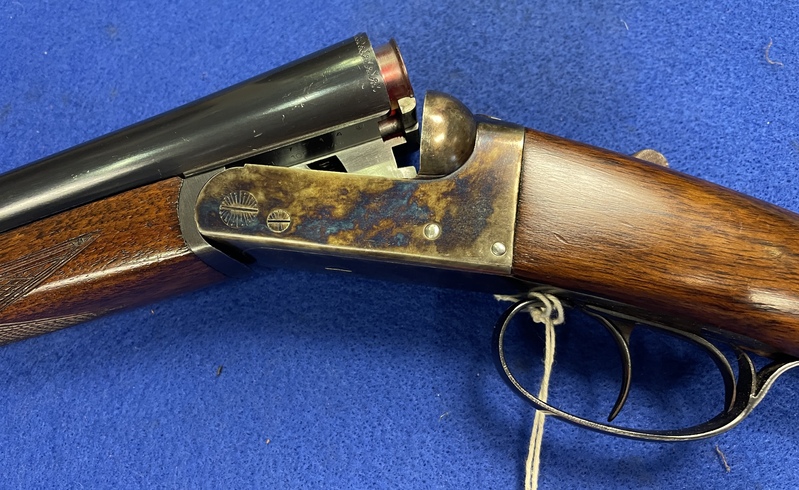
These springs are compressed on rearward movement of the barrel bolt and bolt carrier assembly.Īt the end of recoil the bolt carrier is locked into rear of the receiver. The barrel, suspended in guide bushings, is surrounded by 2 heavy coil-type springs in turn covered by a sheet-metal jacket. The bolt has twin locking lugs which engage locking recesses within the barrel extension. The Model 8 rifle has a locked breech long-recoil action wherein the barrel, bolt, and bolt carrier assembly recoil several inches together so that the bullet has cleared the barrel before unlocking begins. Manufacturing and sales rights were sold to Remington. It was the first successful high power autoloading rifle produced in America. Design of the Model 8 rifle was based on U. Except for minor differences, it is mechanically identical to the Remington Model 8 5-shot autoloading rifle produced from 1906 until 1936. The Remington Model 81 Woods-master autoloading rifle was produced from 1936 until 1950. Remington Models 8 & 81 Autoloading Rifles By James M. Removal of extractor or cocking link is not dependent on prior removal of one or the other. link spring pin (4), and link spring (5). Remove cocking link screw (6) and cocking link (3). Drift out trigger pin (53) and remove triggers (54 & 55)Ħ Remove extractor screw (9) and slide extractor out and away rearward. (B) Remove trigger spring screw (61) and trigger spring (60). It is best to hold a large cloth at rear of receiver while doing this to prevent loss of parts which arc under spring tensionĥ Remove (A) unhooking slide screw (56) and withdraw unhooking slide (62) and assembly from front end of trigger plate. Hammers (49 & 50), hammer stirrups (51), mainspring plungers (48), and mainsprings (47) will drop out. and bolt (38) withdrawn rearward from receiverĤ Next, remove hammer fastening screws (22) and hammer screws (23). Withdraw top-lever spring shell, spring (14), and plunger (15). Pry shell away from tang at (B) using a small screwdriver or hardwood wedge. Using a piece of cotton waste for padding, place thumb against top-lever spring shell (13) and fingers against face of receiver. This will permit removal of stockģ Continue (A) by removing top-lever retaining screw (29). Trip sears (44 & 45), drift out sear pin (40), and remove sears. Trip (41) and its internal assembly will also drop out. Lift trigger plate assembly away, while lifting out cocking slide (46). Use a small wood dowel inserted into forward part of receiver (28) and just in front of cocking crank (17) where a portion of the foremost surface of trigger plate may be seen. Remove front tang screw (30)Ģ Tap out trigger plate (58) and attached assembly. Turn gun right side up and push top-lever (16) to right. Unscrew guard bow (66) and remove 3 trigger plate screws (57, arrows). Remove guard bow screw (67) and rear tang screw (65). Regardless of price, the Parker shotgun justly earned its title of 'Old Reliable'.ġ Commence disassembly by removing fore-end assembly and barrels (1). Parkers were offered in several grades, and all but the cheapest Trojan grade could be ordered built to customers' specifications.

Reputation of the Parker shotgun was founded on uniformly excellent quality and durability as well as fine balance and handling qualities. Forgings were machined slightly oversize and then hand fitted by filing and scraping. The Parker shotgun was essentially machine made, although much hand-fitting was involved in its production. but with the advent of World War II production of Parker shotguns was discontinued and was not resumed with the coming of peace. 1934, the assets of the Parker firm were purchased by Remington Arms Co., Inc. The Parker single trigger was introduced in 1922. A hammerless lock was adopted in 1889, with automatic ejectors first offered in 1902. In 1879 an improved fore-end assembly based on the Deeley & Edge system was made standard. Of hammer type, it featured a lifter bolting device, and the fore-end was attached to the barrels with a cross-key. Their first shotgun was made in 1868 and was known as the 'Parker Brothers'. which position he held until 1868 when the firm of Parker Brothers was organized. Charles Parker became president of the Meriden Mfg. the firm signed a contract with the government to make 15.000 Model 1861 rifled muskets at $19 each.

In 1860 the firm was reorganized to become Parker, Snow, Brooks & Co.

to make coffee mills and subsequently bench vises. In 1832 Charles Parker of Meriden, Conn., organized the Parker Co.


 0 kommentar(er)
0 kommentar(er)
